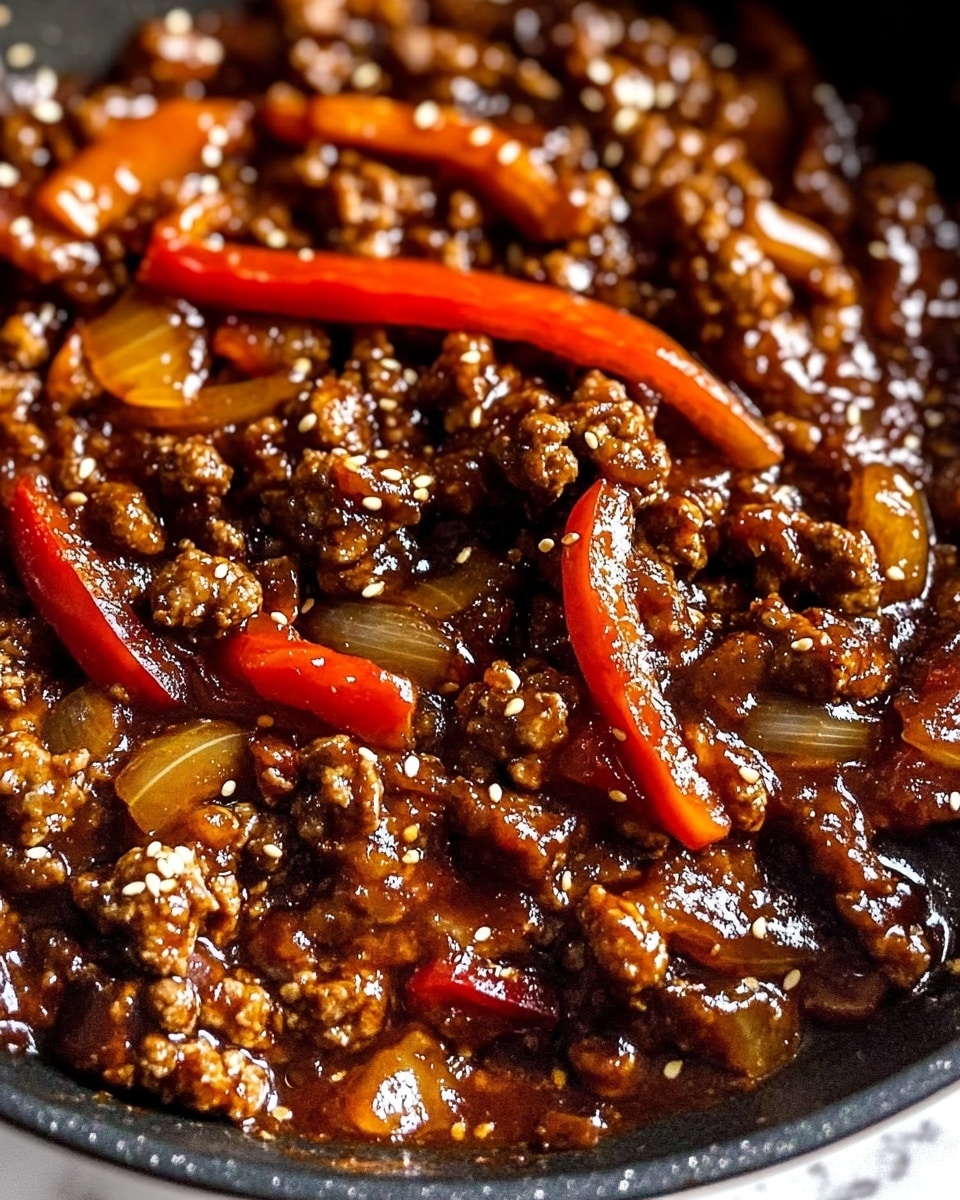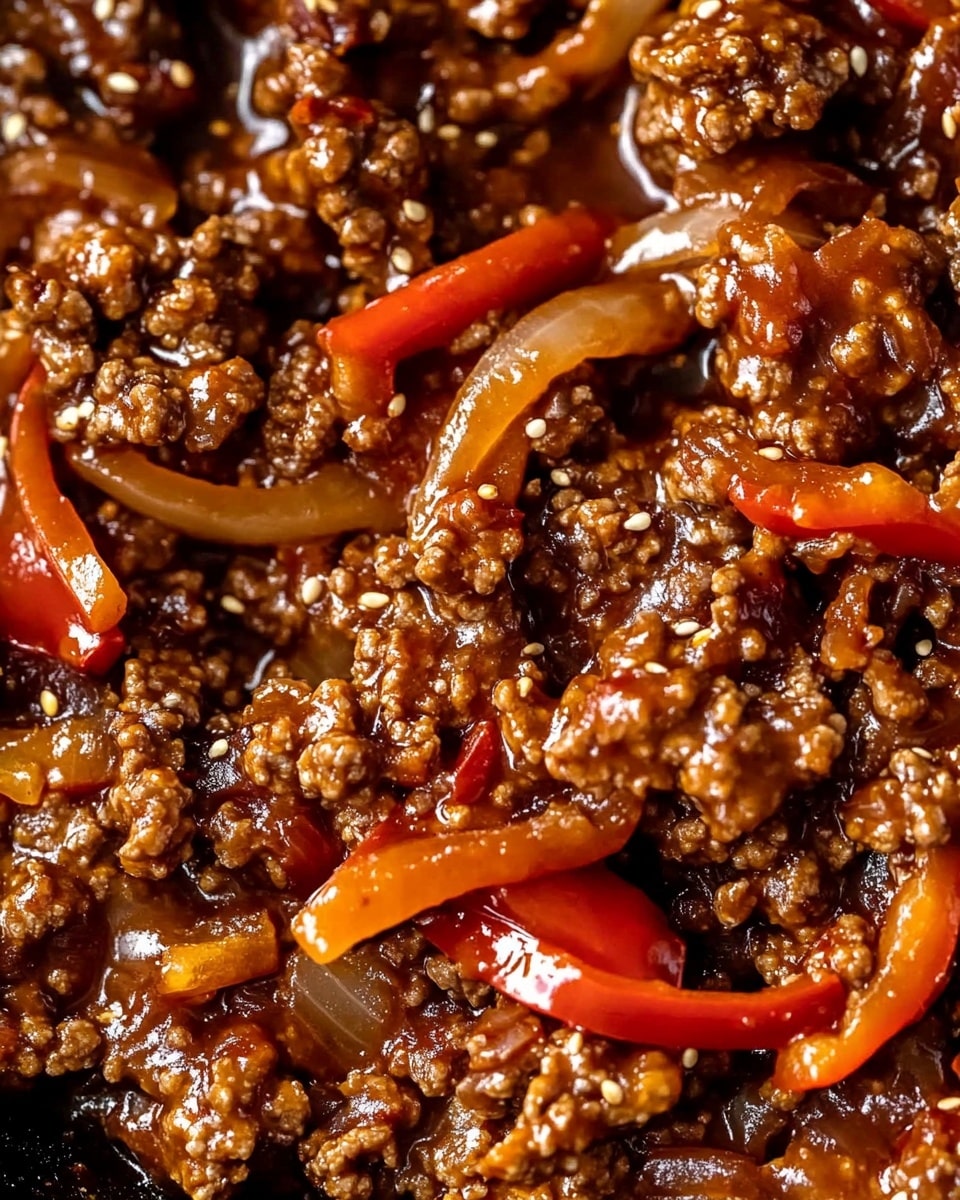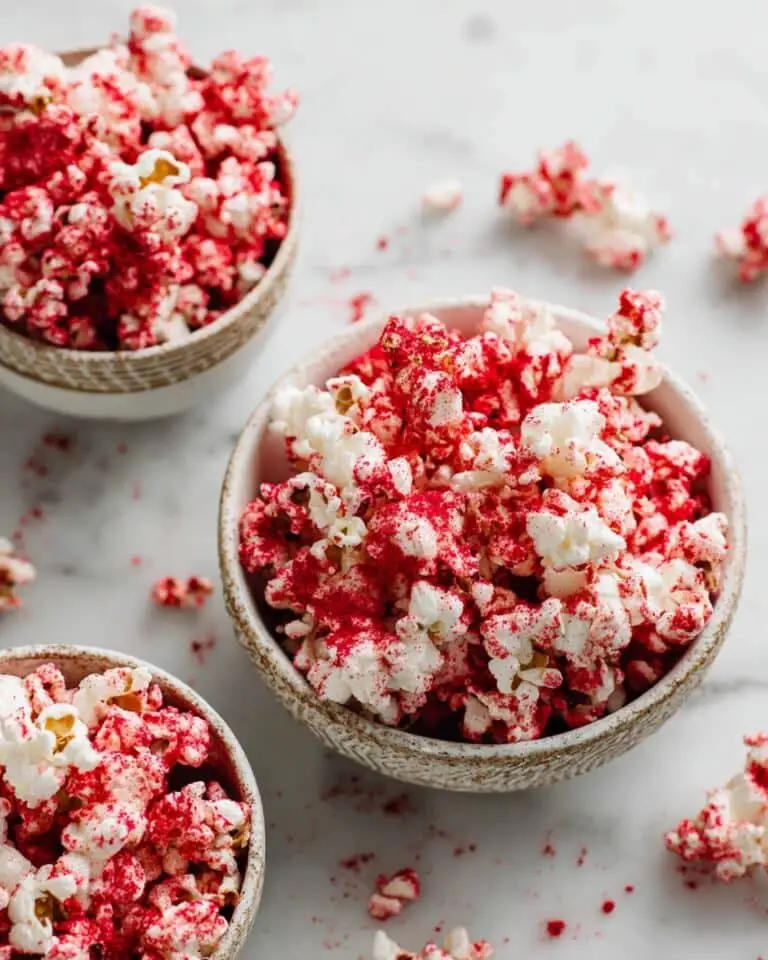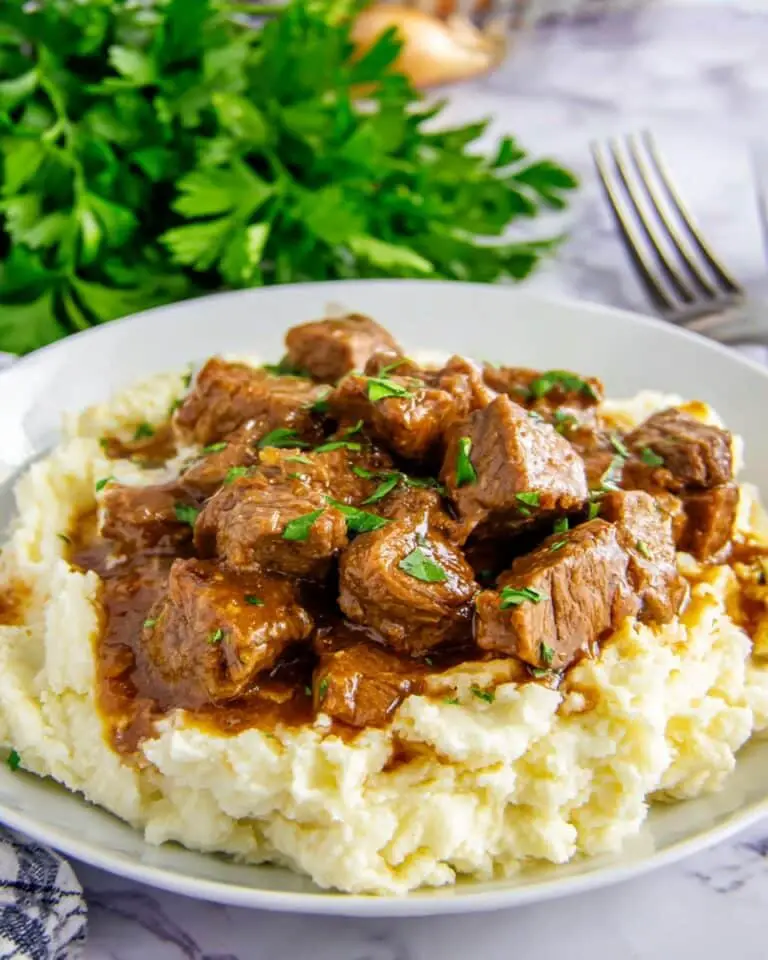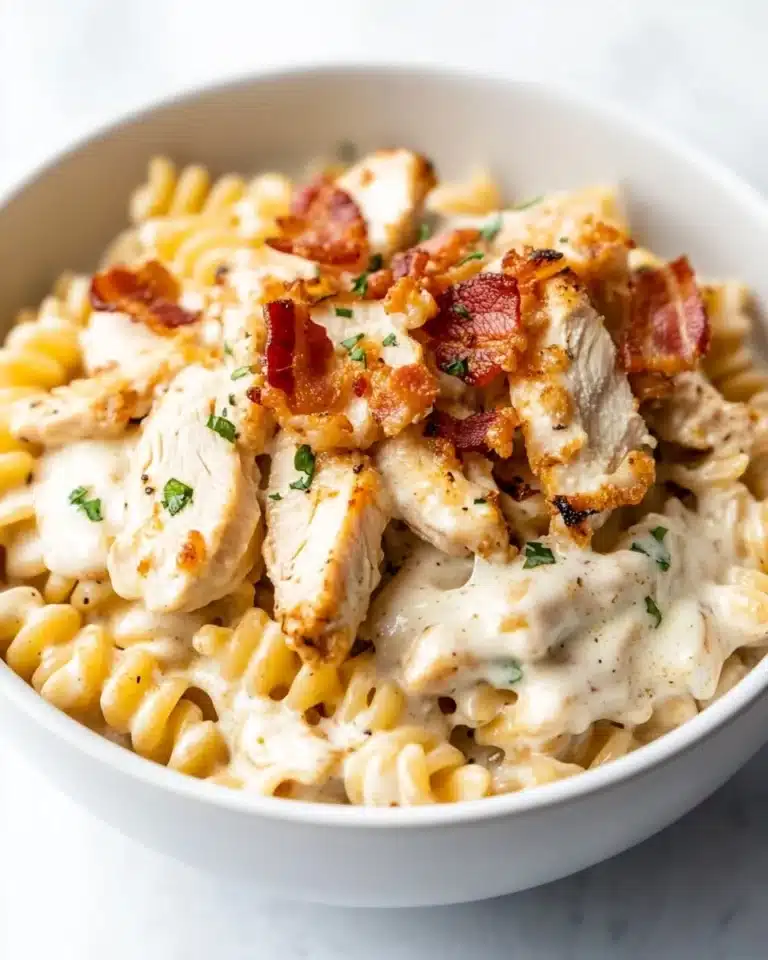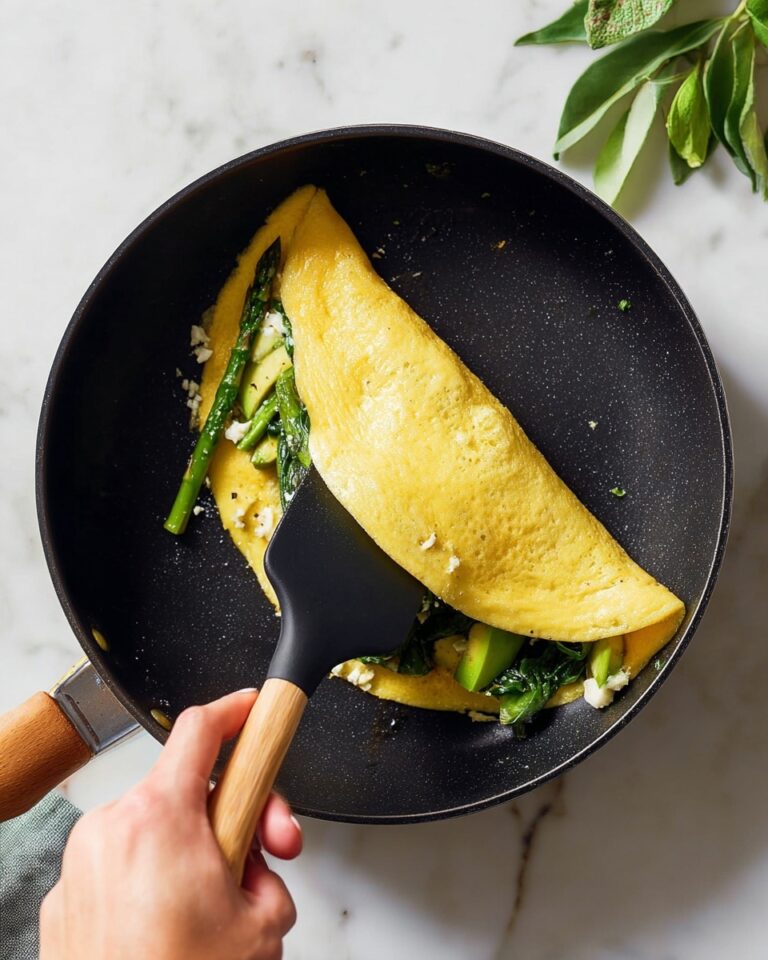If you’re anything like me, you know the magic of a quick, flavorful dinner that feels special enough to impress but fast enough to whip up on a busy weeknight. This 20 Minute Korean Gochujang Beef Bowls Recipe hits that sweet spot perfectly. It combines spicy, sweet, and savory notes in a way that’s downright addictive, and you’ll find yourself coming back to it whenever you want something comforting yet exciting.
What I love most about this recipe is how it takes minimal ingredients and turns them into a bowl full of bold Korean flavors. Whether you’re new to cooking with gochujang or a seasoned fan, this dish is a total winner. Plus, it’s super versatile — perfect for weeknight dinners, quick lunches, or even when you’re feeding a crowd craving bold tastes without waiting forever.
Why You’ll Love This Recipe
- Lightning-fast prep: From start to finish, this recipe clocks in at 20 minutes—perfect for busy nights.
- Balanced bold flavors: The gochujang’s spicy sweetness pairs beautifully with savory beef and bright cucumber salad.
- Flexible protein options: Swap ground beef for chicken or pork and still get that mouthwatering taste.
- Crowd-pleaser every time: My family absolutely goes crazy for this dish—guaranteed to satisfy!
Ingredients You’ll Need
Every ingredient in this 20 Minute Korean Gochujang Beef Bowls Recipe plays a role in crafting those rich, layered flavors. You’ll want to pick fresh veggies and a good-quality gochujang to make all the difference.
- Ground beef: I prefer lean but flavorful ground beef, but chicken or pork works too depending on your mood.
- Butter: Adds richness and helps caramelize the beef and veggies beautifully.
- Bell peppers: Provide a sweet crunch and pop of color; use a mix of red and yellow if you can.
- Shallots: They’re milder than onions and give a subtle sweetness.
- Garlic: Essential for that garlicky punch that pairs so well with gochujang.
- Pickled ginger or fresh ginger: I love pickled ginger here for a tangy contrast, but fresh grated works in a pinch.
- Tamari or soy sauce: Tamari is thicker and gluten-free, but soy sauce brings that classic umami flavor.
- Gochujang Korean chili paste: The star of the show – spicy, sweet, and packed with depth.
- Ginger juice: Adds subtle freshness and zing; you’ll find it in Asian markets or just grate and squeeze fresh ginger.
- Maple syrup or honey: Balances out the heat with a touch of natural sweetness.
- Toasted sesame seeds: For that nutty crunch and authentic finish.
- Chopped roasted peanuts: My personal favorite topping that adds a fantastic crunchy texture.
- Persian cucumbers: Crisp and refreshing for the quick cucumber salad side.
- Green onion/Thai basil: Bright, fresh herbs that bring the whole dish to life.
- Rice vinegar (optional, for cucumber salad): Adds a light acidity if you want to swap out the ginger juice.
Variations
I love how adaptable this 20 Minute Korean Gochujang Beef Bowls Recipe is—feel free to tweak it to suit your taste or dietary needs. I often change things up depending on what’s in my fridge or who I’m cooking for.
- Vegetarian version: Swap ground beef with finely chopped mushrooms or tofu for a plant-based twist that still packs umami flavor.
- Heat level adjustment: If you’re sensitive to spice, cut the gochujang down a bit or swap for a milder chili paste.
- Fresh herbs: I sometimes add fresh cilantro or mint to the cucumber salad for a new aroma that balances the heat.
- Rice alternatives: Try serving over cauliflower rice or noodles for a lighter or carb-friendly option.
How to Make 20 Minute Korean Gochujang Beef Bowls Recipe
Step 1: Brown the Beef and Sauté Vegetables
Start by heating a large skillet over medium heat. Add the ground beef with a pinch of black pepper and cook it until it’s nicely browned, breaking it up with your spatula so it cooks evenly—this should take about 5 minutes. Once browned, stir in the butter, sliced bell peppers, chopped garlic, shallots, and your ginger. Cook for 2 more minutes until the veggies soften but still have some crunch.
Step 2: Build the Sauce and Caramelize
Next, pour in the tamari or soy sauce, then add the gochujang, ginger juice, and about 1/3 cup of water. Stir well so everything combines and cooks off the raw flavors—this usually takes 2 to 3 minutes. For that irresistible glaze, stir in the maple syrup or honey and cook for another 1 to 2 minutes until the beef caramelizes slightly. Don’t skip this step; it makes the flavor truly shine. Remove from the heat and toss in the toasted sesame seeds to add that toasty nuttiness.
Step 3: Prepare the Quick Cucumber Salad
While your beef finishes cooking, toss the chopped Persian cucumbers with a teaspoon of salt, a dash of chili flakes if you like some heat, the ginger juice or rice vinegar, and the chopped green onions or Thai basil. Let this sit for at least 5 minutes to soften and marinate, making it the perfect refreshing contrast to the rich beef.
Step 4: Assemble Your Bowls and Serve
Layer the beef mixture over bowls of freshly cooked rice—white jasmine or brown rice both work beautifully. Add a generous scoop of your cucumber salad on the side and sprinkle chopped roasted peanuts on top for crunch. If you’re feeling indulgent, I love dolloping some spicy mayo over everything to amp up the creaminess and spice.
Pro Tips for Making 20 Minute Korean Gochujang Beef Bowls Recipe
- Don’t rush browning: Properly browning the beef develops flavor and prevents sogginess; take your time on medium heat.
- Taste as you go: Gochujang varies in saltiness and heat, so adjust the sauce ingredients bit by bit until it suits your palate.
- Use fresh ginger juice: It really brightens the dish; if unavailable, freshly grated ginger squeezed through a fine sieve is a handy substitute.
- Avoid watery beef: Drain excess beef fat if your meat is very fatty to keep the sauce from becoming greasy and watery.
How to Serve 20 Minute Korean Gochujang Beef Bowls Recipe
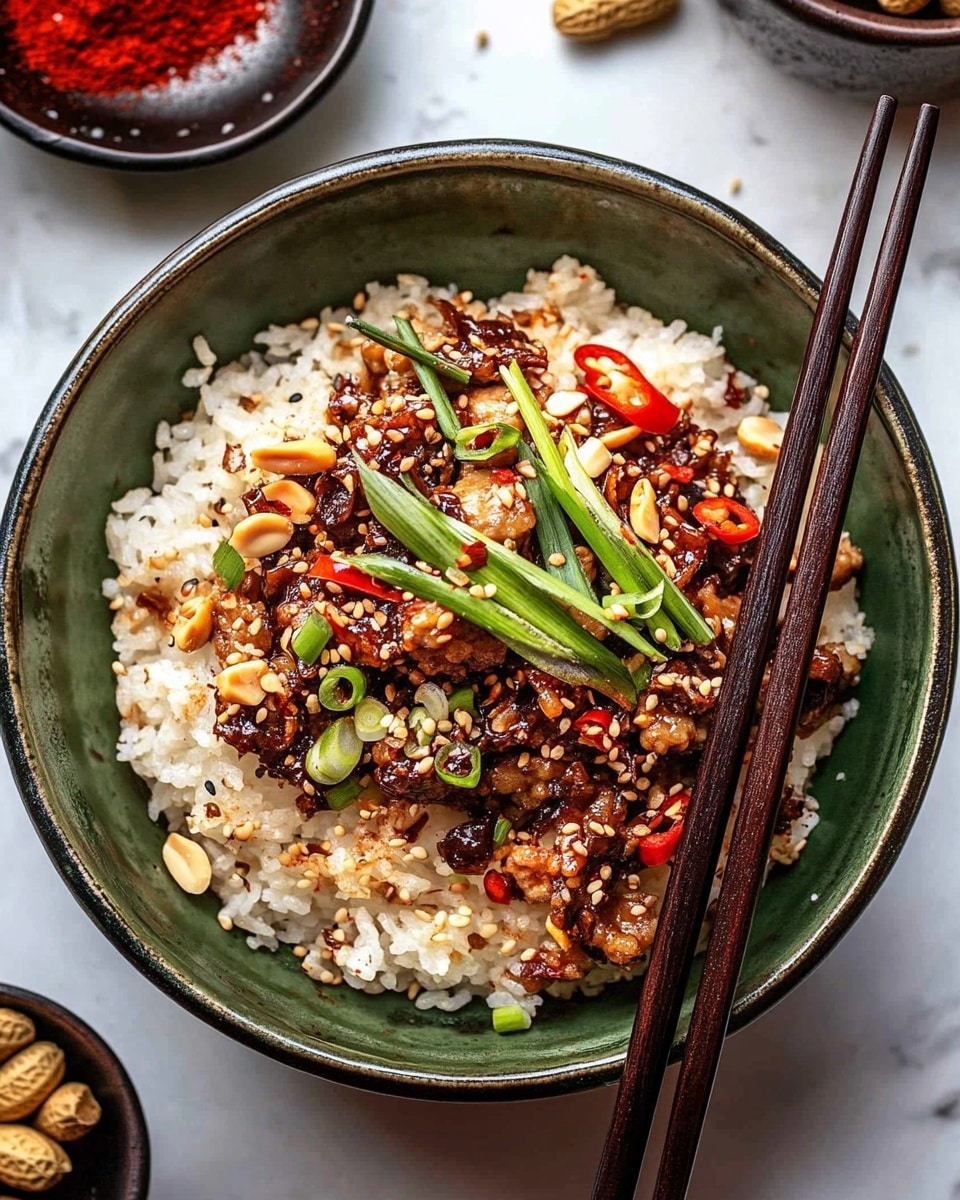
Garnishes
I’m addicted to garnishing my bowls with toasted sesame seeds and chopped roasted peanuts—they add that perfect nutty crunch that’s such a contrast to the tender beef and fresh cucumber salad. Sometimes, I sprinkle thinly sliced green onions or even a few fresh chili slices if I want it hotter. For an extra creamy kick, a drizzle of spicy mayo or a dash of sriracha is always welcome in my kitchen.
Side Dishes
I like pairing these bowls with simple sides like steamed dumplings or crunchy kimchi to keep the Korean theme going. A small bowl of miso soup or a light seaweed salad can add freshness without overpowering the main dish. If you want something heartier, roasted broccoli or garlic green beans are fantastic options to round out the meal.
Creative Ways to Present
For a fun twist, I’ve served this 20 Minute Korean Gochujang Beef Bowls Recipe in lettuce wraps at dinner parties—lettuce leaves become flavorful cups that everyone can fill themselves. Another way I mix it up is by using colorful rice like black or purple rice to brighten the bowl visually. If you’re celebrating, arrange the beef and cucumber salad artfully in pretty bowls and add edible flowers or microgreens as a delicate finishing touch.
Make Ahead and Storage
Storing Leftovers
I usually store leftover beef and vegetables in an airtight container in the fridge for up to 3 days. Keep the cucumber salad separate so it stays crisp and fresh. When you’re ready to eat, just reheat the beef gently on the stove or microwave and add a fresh scoop of cucumber salad right before serving.
Freezing
Freezing the beef mixture works well if you want to make it ahead in bulk. Just cool it completely, portion it into freezer-safe containers, and freeze for up to 2 months. I usually avoid freezing the cucumber salad because it gets watery, so that’s always fresh.
Reheating
When reheating, warm the beef gently on medium-low heat to prevent drying it out. Adding a splash of water or broth helps loosen the sauce. Avoid microwaving too long at high power to keep that beautiful texture and flavor as close to fresh as possible.
FAQs
-
Can I use other types of meat for this 20 Minute Korean Gochujang Beef Bowls Recipe?
Absolutely! While ground beef is traditional here, you can easily substitute ground chicken or pork. For a vegetarian version, try mushrooms or tofu to soak up the flavors beautifully.
-
How spicy is gochujang and can I adjust it?
Gochujang has a medium heat level with a complex spicy-sweet flavor. If you prefer milder dishes, start with less gochujang and add more to taste. You can also balance it with extra maple syrup or honey.
-
What can I serve instead of rice with this recipe?
This recipe is versatile—serve it over noodles, quinoa, or even cauliflower rice for a lighter option. Lettuce wraps also work great for a low-carb alternative.
-
Can I make the cucumber salad ahead of time?
I recommend making the cucumber salad just before serving or at least not more than an hour ahead to retain its crunch and brightness. If you prepare it too early, the cucumbers release water and may get soggy.
Final Thoughts
This 20 Minute Korean Gochujang Beef Bowls Recipe has become one of my go-to meals because it’s quick, insanely delicious, and hits that perfect balance of spicy, sweet, and savory. I love sharing it with friends who tell me it tastes like they’re dining out, but with way less fuss. Give it a try—you’ll enjoy making and eating this dish as much as I do!
Print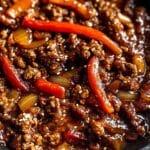
20 Minute Korean Gochujang Beef Bowls Recipe
- Prep Time: 10 minutes
- Cook Time: 10 minutes
- Total Time: 20 minutes
- Yield: 6 servings
- Category: Main Course
- Method: Stovetop
- Cuisine: Korean
Description
This 20 Minute Korean Gochujang Beef Bowl is a flavorful and quick weeknight meal featuring savory ground beef cooked with bell peppers, shallots, and a spicy-sweet Korean chili paste sauce. Served with a refreshing cucumber salad and topped with toasted sesame seeds and chopped peanuts, this dish offers a perfect balance of heat, umami, and crunch, ideal for those craving authentic Korean flavors in an easy-to-make bowl.
Ingredients
Main Ingredients
- 1 1/2 lb ground beef (or chicken or pork)
- 2 tbsp butter
- 2 bell peppers, sliced
- 3 shallots, sliced
- 4 cloves garlic, chopped
- 1/4 cup pickled ginger (or 1 tablespoon fresh grated ginger)
- 1/2 cup tamari or soy sauce
- 2-3 tbsp Gochujang (Korean chili paste)
- 2 tbsp ginger juice
- 2 tbsp maple syrup or honey
- 1/4 cup toasted sesame seeds
- 1/3 cup chopped roasted peanuts
Cucumber Salad
- 4 Persian cucumbers, chopped
- 1 tbsp Gochujang (Korean chili paste)
- 1/4 cup chopped green onion or Thai basil
- 2 tbsp ginger juice or rice vinegar
- 1 teaspoon salt
- Chili flakes (optional, quantity to taste)
Instructions
- Brown the Meat: In a large skillet over medium heat, add the ground beef and a pinch of black pepper. Break up the meat with a spatula as it cooks. Continue cooking until the beef is fully browned, about 5 minutes.
- Sauté Vegetables: Add butter, sliced bell peppers, chopped garlic, sliced shallots, and pickled or fresh grated ginger to the skillet with the browned beef. Cook for approximately 2 minutes until the vegetables begin to soften and become fragrant.
- Add Sauce Ingredients: Pour in tamari or soy sauce, then add the Gochujang and ginger juice along with 1/3 cup water. Stir well and cook for 2-3 minutes, allowing the sauce to coat the beef and vegetables evenly.
- Caramelize the Beef: Mix in the maple syrup or honey and continue to cook for an additional 1-2 minutes until the sauce thickens and the beef mixture becomes caramelized. Remove the skillet from heat and toss the mixture with toasted sesame seeds for added flavor.
- Prepare the Cucumber Salad: In a separate bowl, combine chopped Persian cucumbers with 1 teaspoon salt, chili flakes if using, Gochujang, ginger juice or rice vinegar, and chopped green onions or Thai basil. Mix thoroughly and let the salad sit for 5 minutes to marinate and develop flavor.
- Serve: Spoon the Korean Gochujang beef and pepper mixture over cooked rice bowls. Serve alongside the marinated cucumber salad and top everything with chopped roasted peanuts. Optionally, add spicy mayo for an extra kick. Enjoy your delicious Korean beef bowls!
Notes
- You can substitute ground beef with ground chicken or pork based on preference.
- Adjust the amount of Gochujang to control the spice level.
- For a gluten-free option, use tamari instead of soy sauce.
- The cucumber salad can be prepared ahead and refrigerated for extra flavor.
- Adding a fried egg on top of the bowl enhances texture and richness.
- Spicy mayo can be made by mixing mayonnaise with additional Gochujang or Sriracha.

